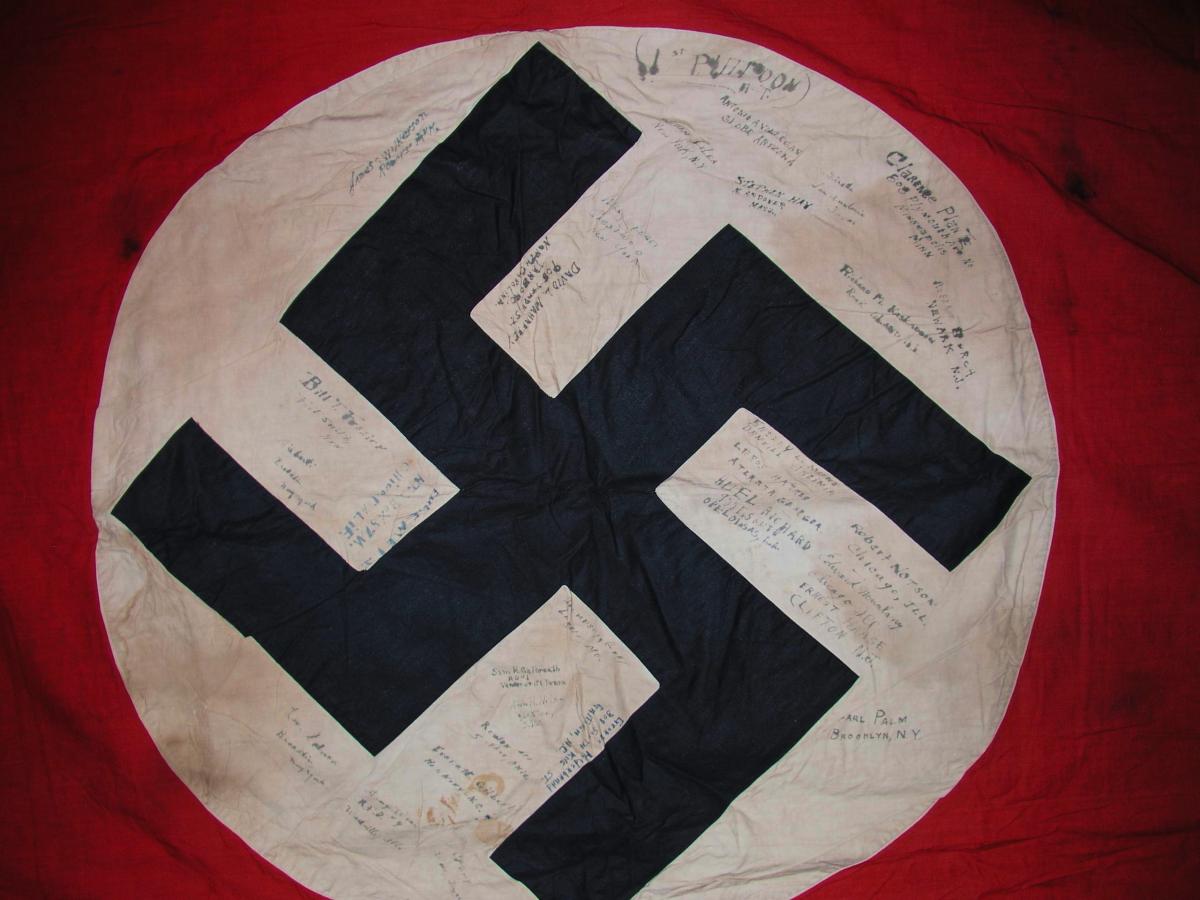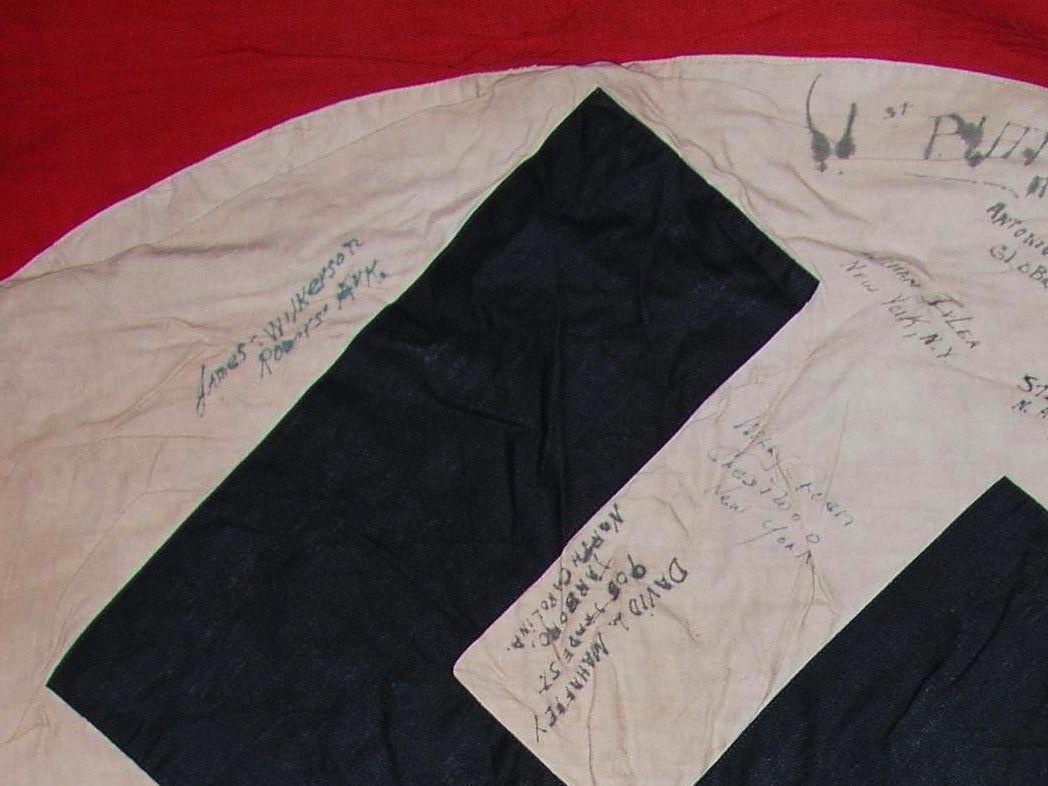Here is my complete knowledge of the flag that was relayed to me from Bill Frazier’s’ daughter to my wife after his passing, who had heard the story many times.
In November of 1944, around the town of Pummern, Germany, the 334th 1st platoon Anti-Tank under Lt. Carl C. Palm, was given orders to take his platoon plus a group of 309th combat engineers to a bridge that could be used as a path for a German counter-offensive to the American flank in Prummern.
On arriving at the bridge, the 309th engineers began to mine the bridge while the anti-tankers set up for a defense of the bridge. Not long after they all had arrived and started doing their job, there came a rumble and clanking noise from down the road indicating the approach of a German tank.
As the engineers ducked for cover, the anti-tank men hurried up their finishing touches to their defensive positions for the upcoming battle. Soon a single German VI tank came into view and rolled up to the bridge. It hesitated, then started across the bridge. Waiting until the tank had almost reached the other side and clear of the bridge, the anti-tank men let loose on the German tank hitting the front drive sprocket. The German tank did an immediate right hand turn down the side of the embankment by the bridge, with the front of the tank sliding near the waters edge.
The anti-tankers and engineers were all over-joyed as to their encounter with the German tank that a celebration broke out with a lot of back slapping and whose shot did what and so on. Little did they realize the crew of the German tank had climbed out of the front of the tank and made it back across the water and was making a quick retreat back down the road from whence they came. After a few shots to help the Germans run a little faster, the engineers went back to work mining the bridge as the anti-tankers examined their smoldering prize. At this point, is when Bill Frazier’s examination found and obtained the flag as a war souvenir from the German tank.
After the engineers completed the mining of the bridge, they returned to the defensive positions the anti-tank men had built and told them to set back and watch as the engineers would show them, “How to do it.”
They didn’t have long to wait, as down the road came the rumble and clanking noise from another approaching tank. But this time to their surprise, two Tiger tanks came into view as they all hunkered down with a little uneasiness. The first Tiger pulled up short of crossing the bridge as the second Tiger stopped and turned its main amour toward the American side. Then the first Tiger backed up, turned, and started down the side of the bank while the second stood ground as covering fire. As it entered the water, probably form information from the first destroyed tank crew, it seemed to swim across with no problem
No one gave the command, but everyone had heard of the Tiger tanks capabilities and they all decided, in unison, it was time to bug-out. Each group was on its own as they took different paths out of the area. Some made it back that day, some were cut off, due to the German counter offensive. Lt. Palm, was one who spent the night elsewhere, which is related on the Internet under Lone Sentry Railsplitter, Story of the 84th, also in the book under same title.
Later they all signed the flag as friends and brothers forever without listing their rank.








